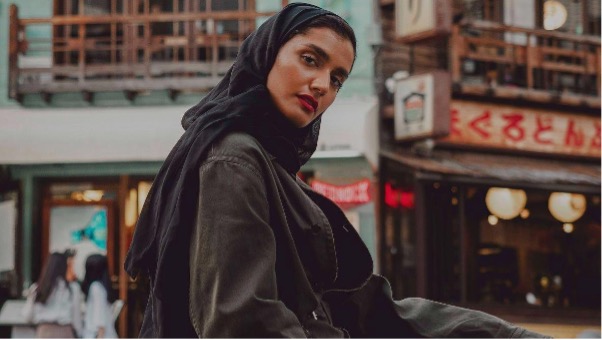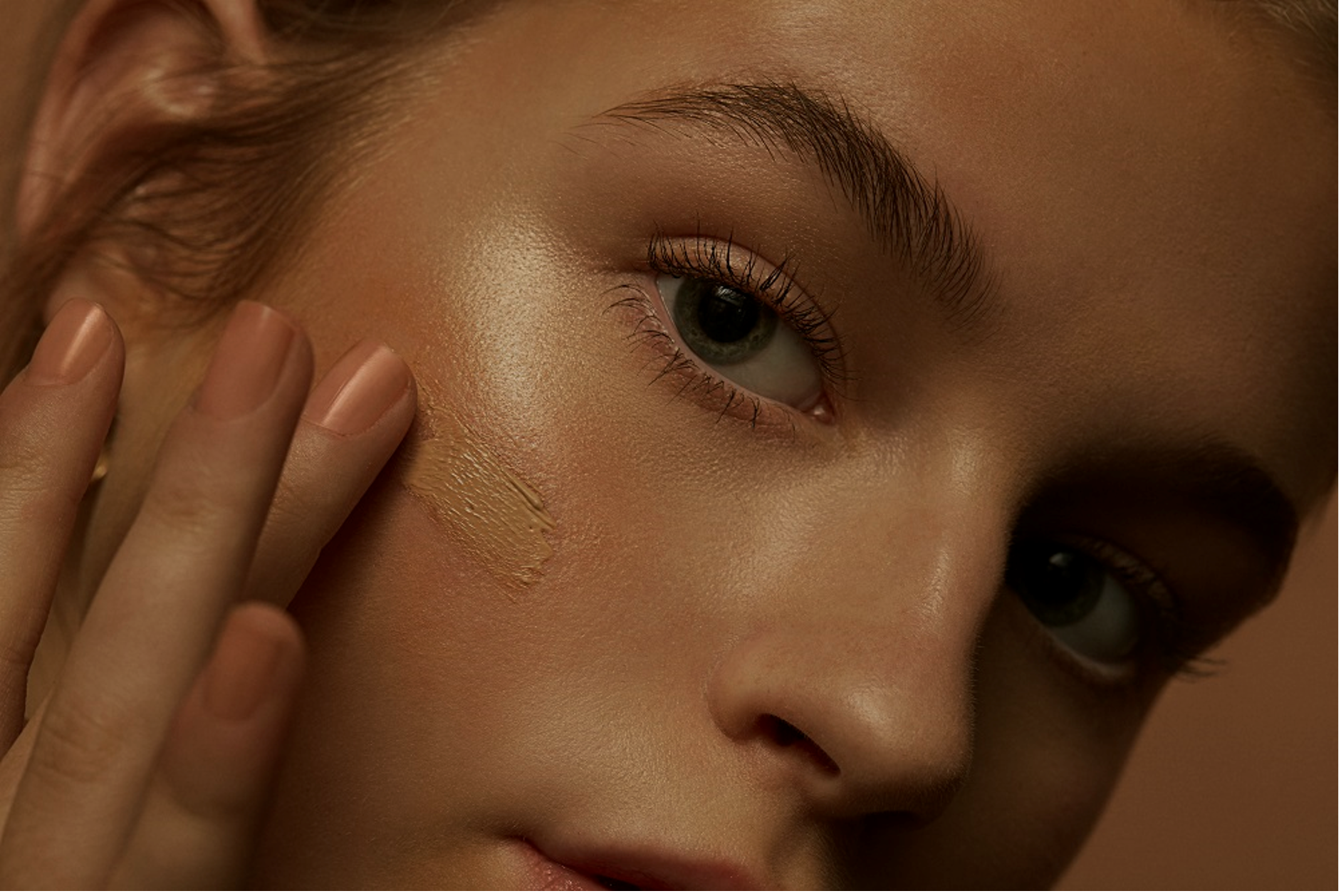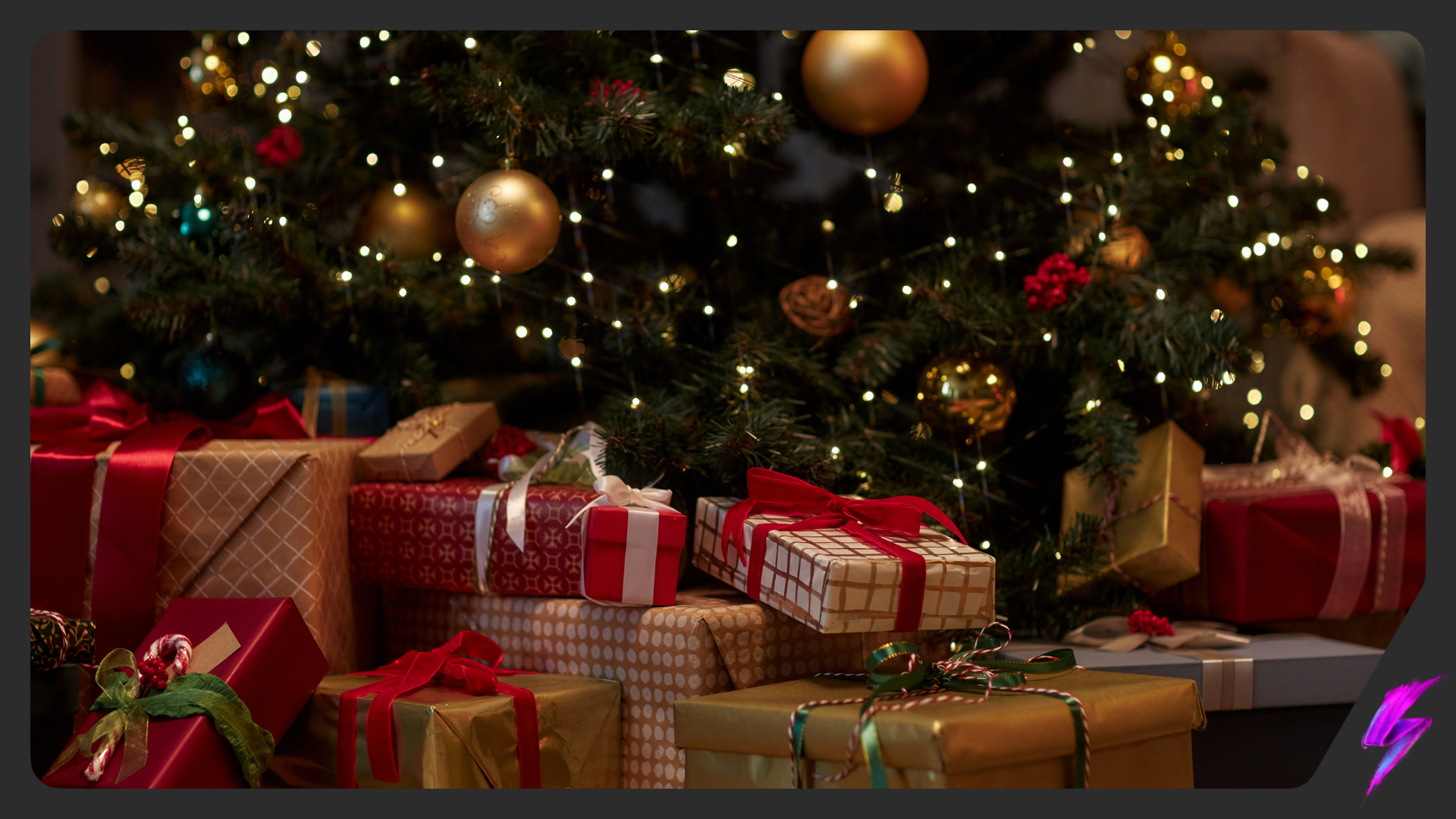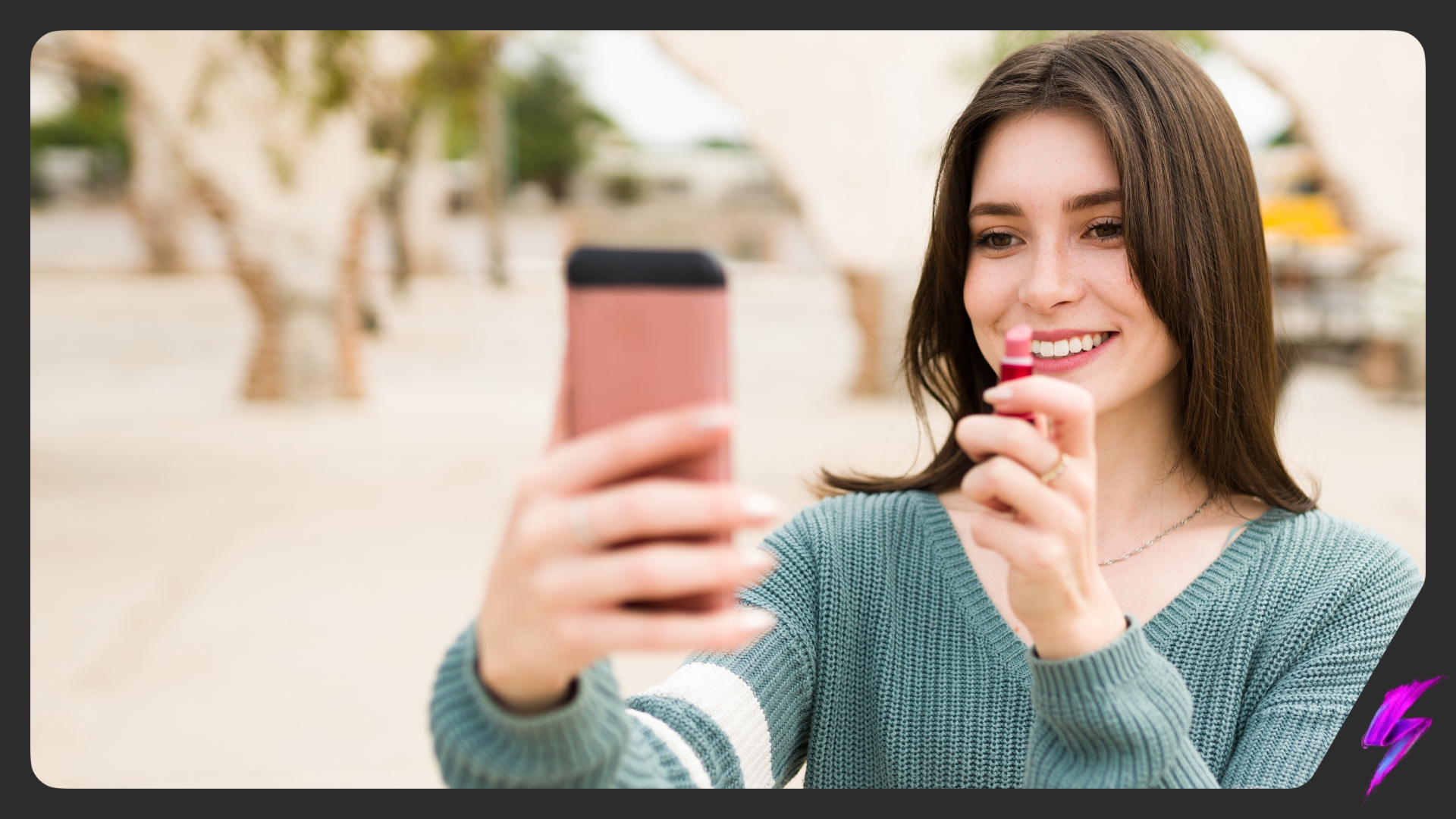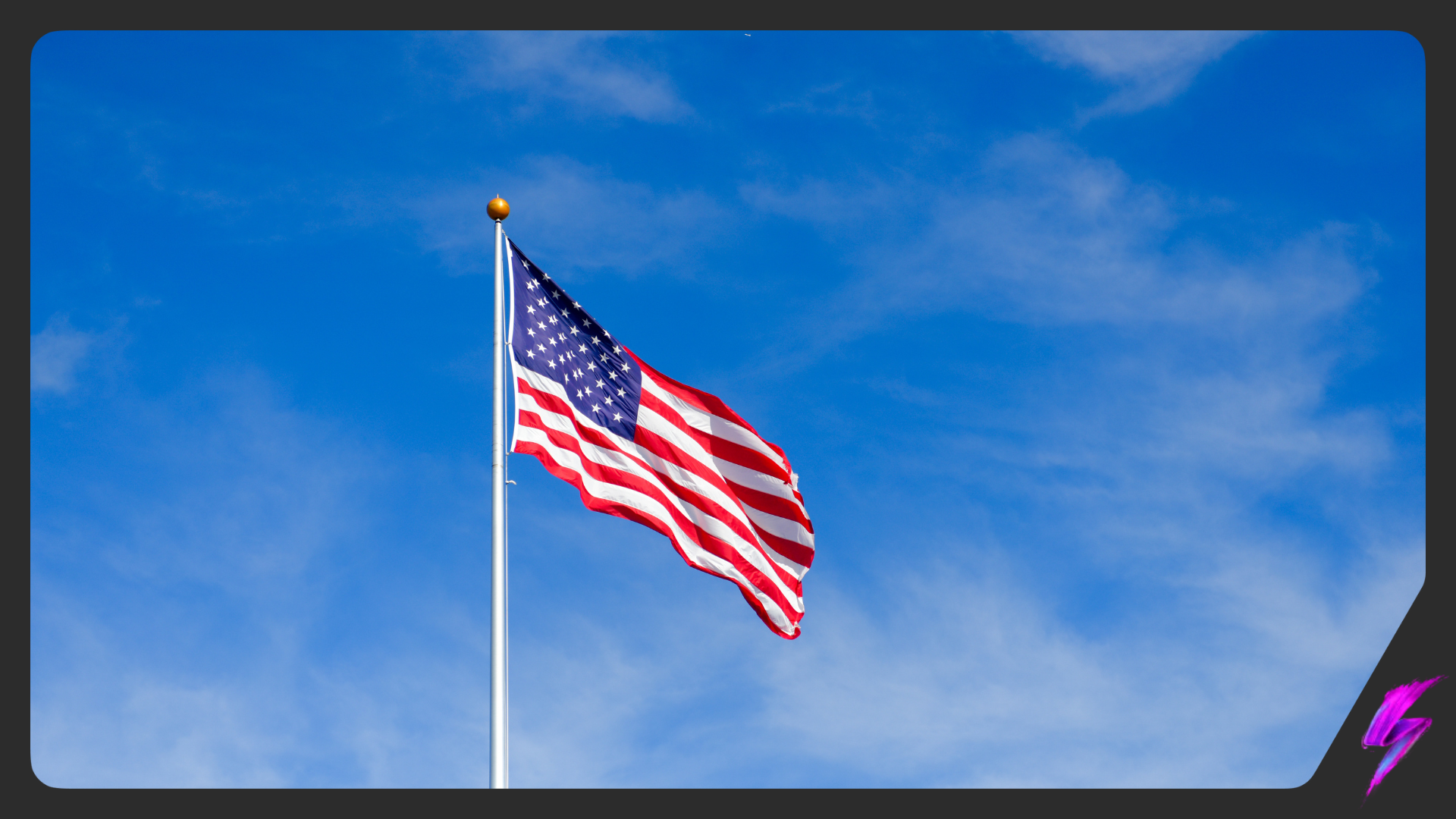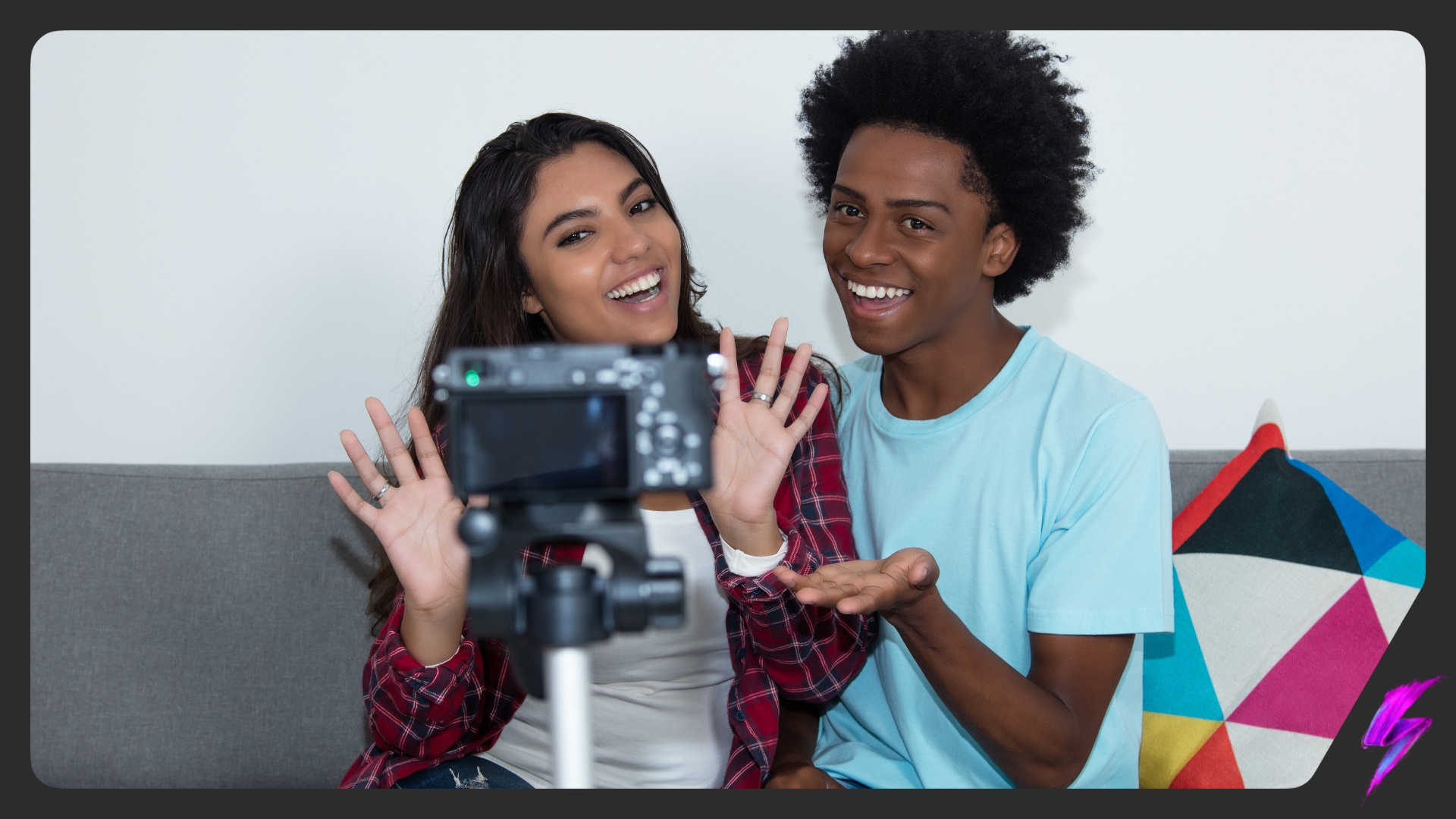How Much Does Influencer Marketing Cost in 2025?
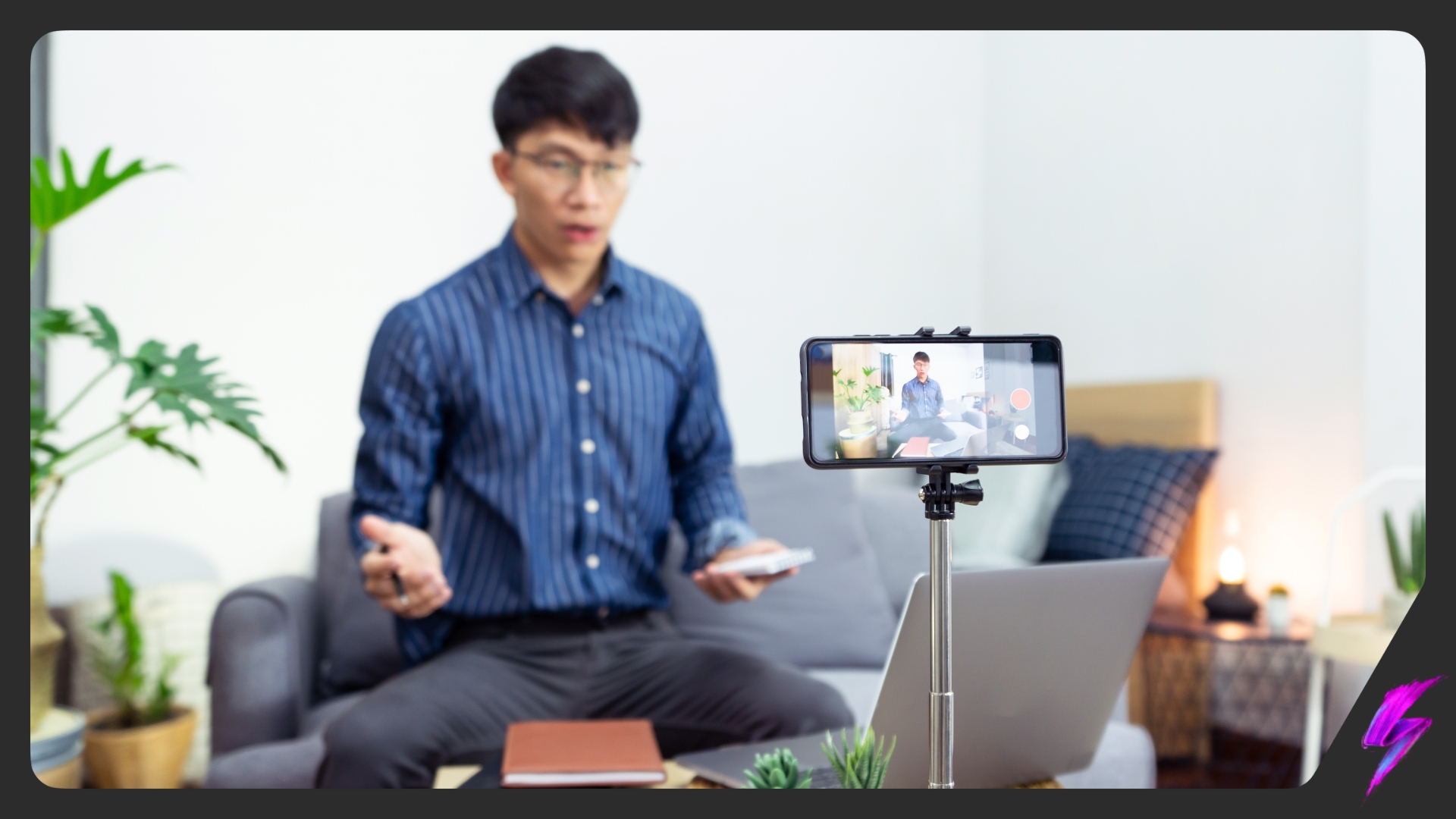






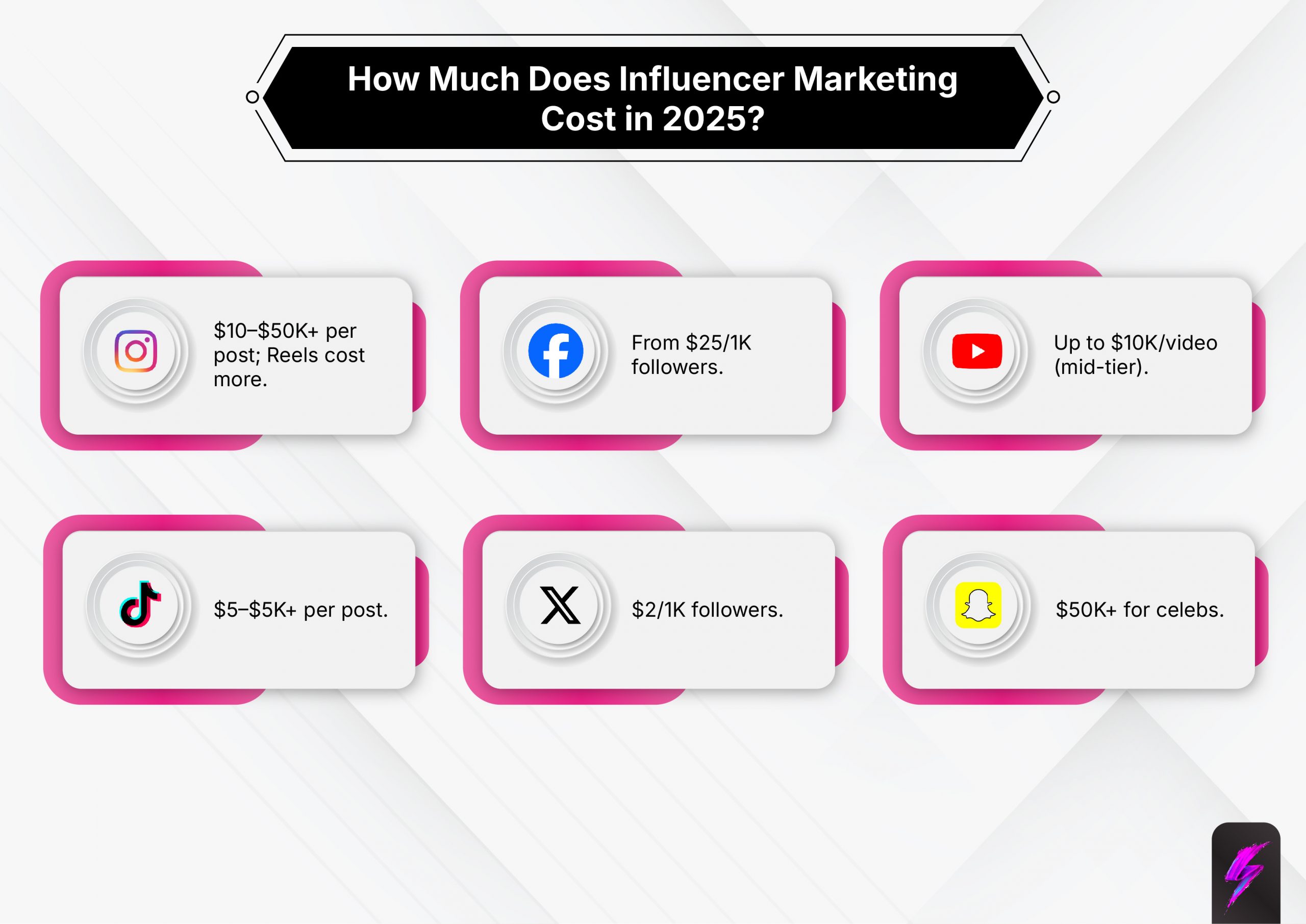
Influencer marketing costs in 2025 range from $5 per post for nano TikTok creators to over $50,000 for celebrity Snapchat influencers, depending on platform, audience size, content type, and engagement.
Instagram posts start at $10 for nano influencers and exceed $50,000 (per post) for mega creators, with Reels costing more due to higher production effort and engagement. Facebook posts begin at $25 per 1,000 followers, scaling with content type and campaign complexity.
YouTube videos pay mid-tier creators up to $10,000 per video, influenced by subscriber count, views, retention, and production quality. TikTok rates rise from $5 to $5,000+ as follower count and engagement increase, while X (formerly Twitter) remains cost-efficient at $2 per 1,000 followers per post.
Brands should plan budgets by considering influencer tier, content type, platform, and campaign goals to maximize reach, engagement, and conversions.
What Is Instagram Influencer Marketing Pricing?
Instagram influencer marketing prices vary widely, from under $10 to over $10,000 per post. Rates depend on follower count, engagement rate, content type, campaign requirements, and influencer niche.
Reels typically cost more than standard posts due to higher production and engagement potential. Influencers are grouped as nano, micro, mid-tier, and macro, with pricing scaling alongside audience size and niche authority.
The US Instagram influencer marketing market reached $2.21 billion according to a 2024 study by Business of Apps titled “Influencer Marketing Costs (2024)”, reflecting the platform’s ability to drive audience engagement and brand awareness at scale. This figure highlights why brands prioritize Instagram for influencer campaigns, as the channel combines massive reach with high engagement rates, making it an important component of modern marketing strategies.
What is the Instagram Post Rate in 2025?
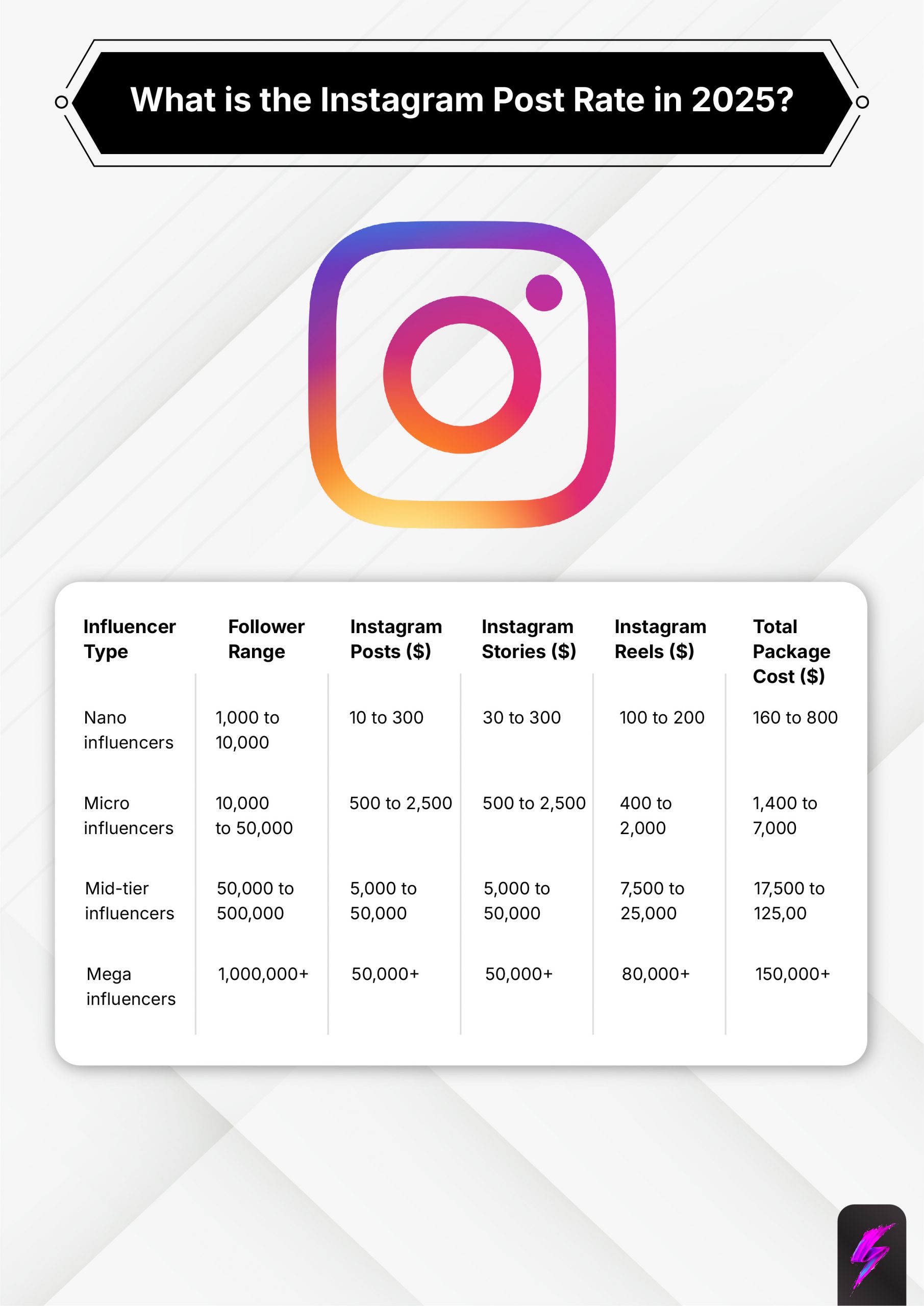
Instagram post rates in 2025 vary depending on audience size, engagement quality, content type, and campaign requirements. For example, a nano post costs as little as $10, while high-tier video campaigns for mega-influencers exceed $10,000.
The table below outlines typical Instagram influencer rates by tier. Brands should use these ranges to estimate budgets for influencer campaigns.
| Influencer Type | Follower Range | Instagram Posts ($) | Instagram Stories ($) | Instagram Reels ($) | Total Package Cost ($) |
| Nano influencers | 1,000 to 10,000 | 10 to 300 | 30 to 300 | 100 to 200 | 160 to 800 |
| Micro influencers | 10,000 to 50,000 | 500 to 2,500 | 500 to 2,500 | 400 to 2,000 | 1,400 to 7,000 |
| Mid-tier influencers | 50,000 to 500,000 | 5,000 to 50,000 | 5,000 to 50,000 | 7,500 to 25,000 | 17,500 to 125,000 |
| Mega influencers | 1,000,000+ | 50,000+ | 50,000+ | 80,000+ | 150,000+ |
Sources: Business of Apps, Statista, Influencer Marketing Hub, Impact
What Is Facebook Influencer Marketing Pricing?
Facebook influencer marketing pricing starts at $25 per 1,000 followers per post and increases based on audience size, engagement level, content type, and campaign scope.
With a daily active user base exceeding 1 billion, campaigns on Facebook can expand audience reach and strengthen brand presence across demographics. Smaller creators cost less, while video posts, live sessions, or campaigns that require travel or specialized production have higher rates.
Facebook provides tools like Brand Collabs Manager so brands can discover influencers with at least 1,000 followers and negotiate deals.
How Much Do Facebook Influencers Cost Based on Follower Count?
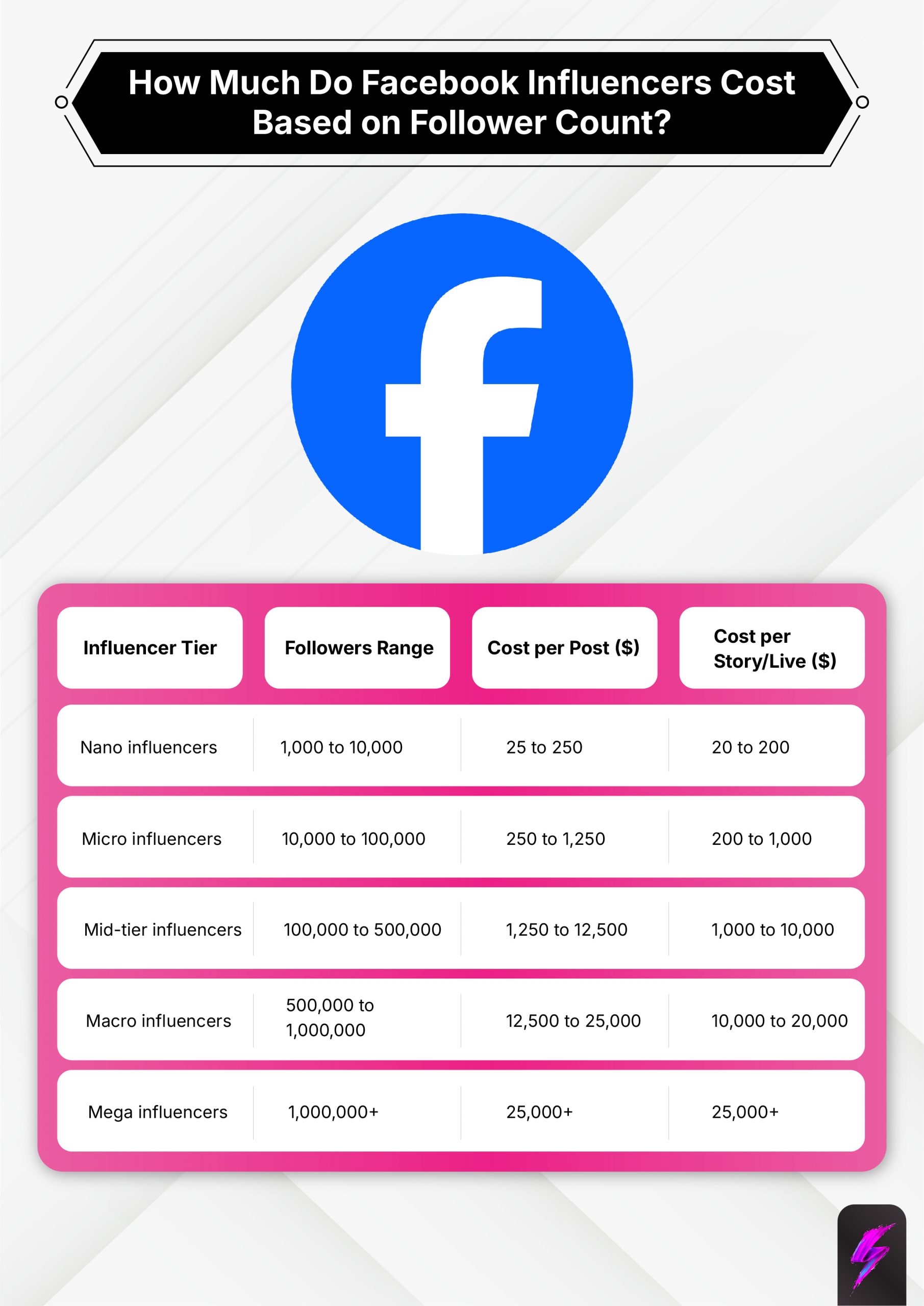
For Facebook influencers, the costs vary due to factors like influencer tier, audience alignment, engagement rate, content type, and brand fit. Prices cover posts, stories, and live sessions.
The table below shows estimated Facebook influencer rates in 2025.
| Influencer Tier | Followers Range | Cost per Post ($) | Cost per Story/Live ($) |
| Nano influencers | 1,000 to 10,000 | 25 to 250 | 20 to 200 |
| Micro influencers | 10,000 to 100,000 | 250 to 1,250 | 200 to 1,000 |
| Mid-tier influencers | 100,000 to 500,000 | 1,250 to 12,500 | 1,000 to 10,000 |
| Macro influencers | 500,000 to 1,000,000 | 12,500 to 25,000 | 10,000 to 20,000 |
| Mega influencers | 1,000,000+ | 25,000+ | 25,000+ |
Sources: Business of Apps, Statista, Influencer Marketing Hub, Impact, Meltwater
What Is Snapchat Influencer Marketing Pricing?
Snapchat influencer marketing pricing starts at $200 per post for nano-influencers and rises with audience size and engagement. Rates vary depending on whether influencers create standard posts, Stories, Spotlight content, or Snap Ads.
Stories and Spotlight content have higher rates due to better engagement potential and interactive features. Top-tier influencers with over 1 million followers may charge $50,000+ per post, especially for campaigns that require custom content or long-term partnerships.
Brands targeting Gen Z value Snapchat for authentic, youth-focused engagement, making influencer investment essential for reach, interaction, and visibility on this platform.
Snapchat influencer pricing also depends on factors like follower count, audience demographics, swipe-up metrics, previous performance, and campaign objectives.
Sponsored content or brand partnerships on Snapchat also influence rates, while Spotlight rewards provide performance-based earnings for creators.
What Are Snapchat Influencer Rates Based on Follower Count?
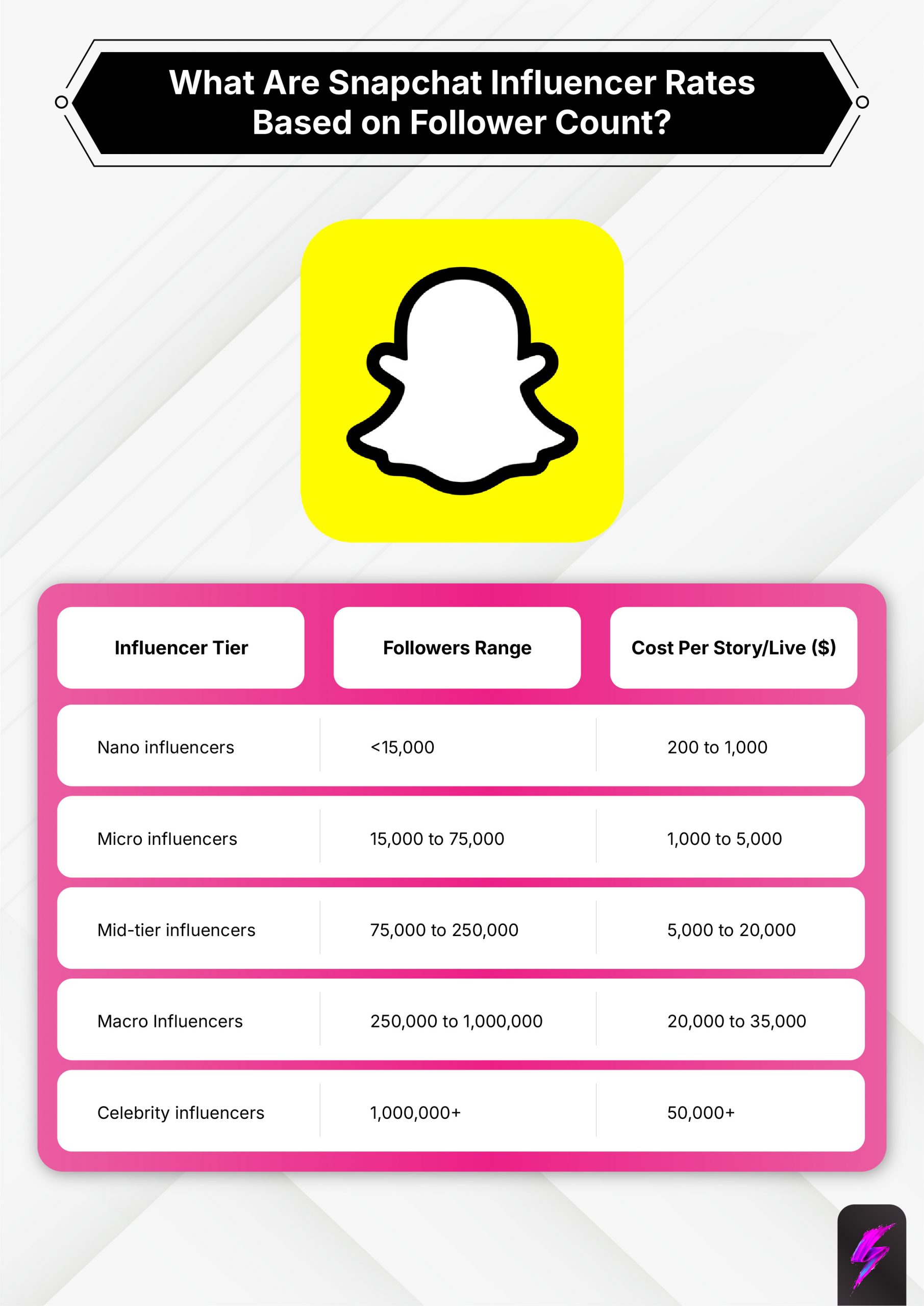
This table shows estimated Snapchat influencer rates in 2025 based on follower count. Rates are influenced by engagement, content type, and campaign scope.
| Influencer Tier | Followers Range | Cost Per Story/Live ($) |
| Nano influencers | <15,000 | 200 to 1,000 |
| Micro influencers | 15,000 to 75,000 | 1,000 to 5,000 |
| Mid-tier influencers | 75,000 to 250,000 | 5,000 to 20,000 |
| Macro Influencers | 250,000 to 1,000,000 | 20,000 to 35,000 |
| Celebrity influencers | 1,000,000+ | 50,000+ |
Sources: Business of Apps, Statista, Influencer Marketing Hub, Impact, Meltwater
What Is YouTube Influencer Marketing Pricing?
YouTube influencer marketing pricing starts at $50 per 1,000 subscribers per video and rises based on subscriber count, average views, engagement, video length, retention rate, and production quality.
YouTube, as the largest video-sharing platform, allows creators to reach massive audiences while maintaining full influence over how content is presented, making it a top choice for brands seeking high-impact campaigns.
Video format, dedicated versus integrated content, and audience trust affect pricing, with high-quality productions and longer videos commanding higher rates.
How Much Do YouTube Influencers Charge?

The table below mentions the average costs by subscriber count, with pricing influenced by engagement, video production quality, audience retention, and type of content.
| Influencer Tier | Subscribers Range | Price per Video ($) |
| Nano influencers | 1,000 to 10,000 | 20 to 200 |
| Micro influencers | 10,000 to 50,000 | 200 to 1,000 |
| Mid-tier influencers | 50,000 to 500,000 | 1,000 to 10,000 |
| Macro influencers | 500,000 to 1,000,000 | 10,000 to 20,000 |
| Mega influencers | 1,000,000+ | 20,000 to 80,000 |
| Celebrity influencers | 5,000,000+ | 100,000+ |
Sources: Business of Apps, Statista, Influencer Marketing Hub, Impact
What Is TikTok Influencer Marketing Pricing?
TikTok influencer marketing pricing starts at $5 per post for nano influencers and increases with follower count. Other factors affecting prices include engagement, content type, and campaign requirements.
TikTok’s massive popularity among Gen Z and younger audiences makes it a good platform for brands seeking high interaction and viral reach.
Content complexity, video length, and exclusivity influence rates, with longer or specialized videos costing more. Micro-influencers with 10k to 50k followers typically charge $25 to $125 per post, while mega-influencers with over 1M followers may ask for $5,000+ per post.
TikTok’s competitive environment and creative formats drive higher engagement per dollar compared to other platforms, giving brands both visibility and interaction value.
What Is the Pricing for TikTok Influencers by Tier?
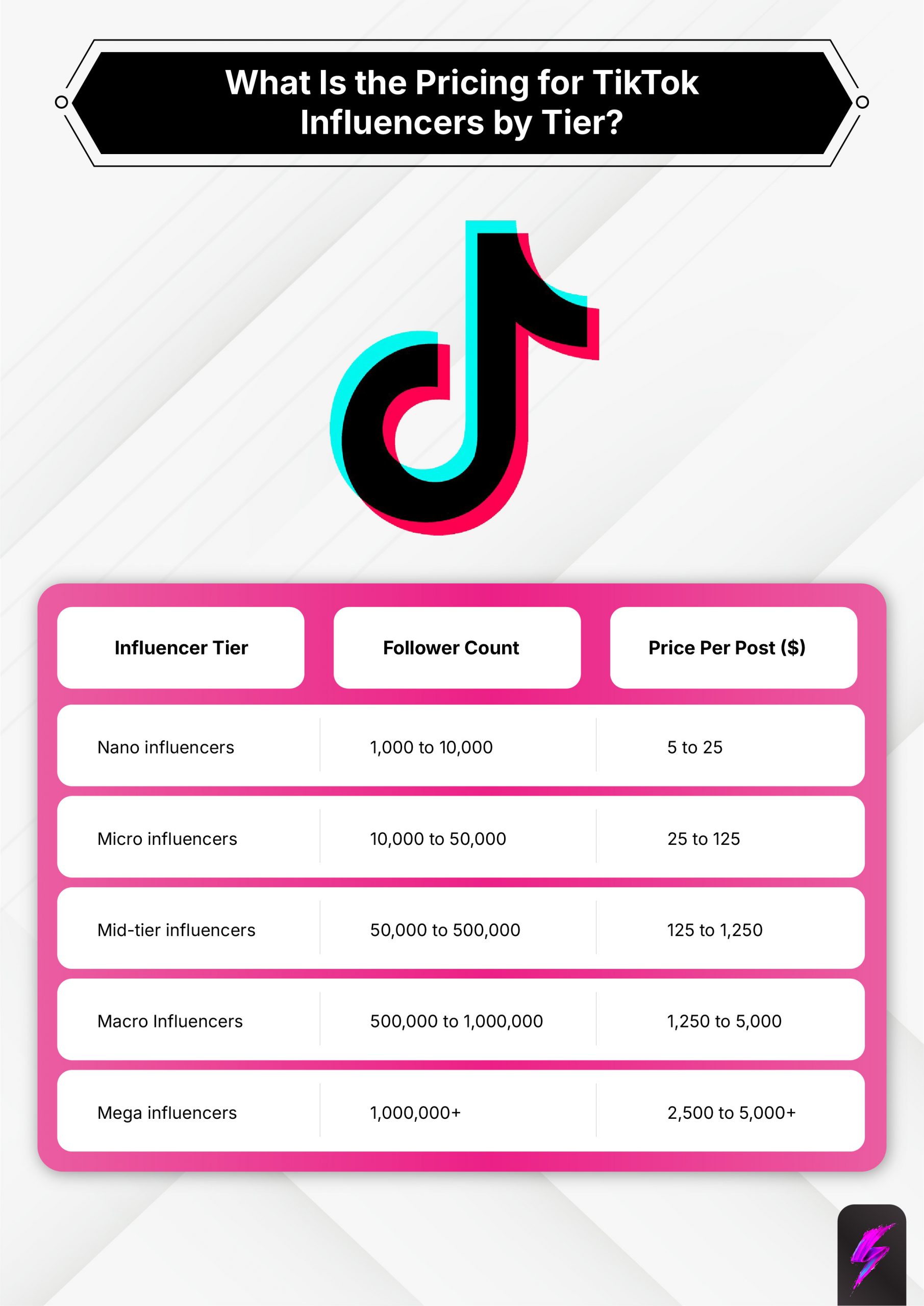
The table below outlines estimated TikTok influencer rates in 2025.
| Influencer Tier | Follower Count | Price Per Post ($) |
| Nano influencers | 1,000 to 10,000 | 5 to 25 |
| Micro influencers | 10,000 to 50,000 | 25 to 125 |
| Mid-tier influencers | 50,000 to 500,000 | 125 to 1,250 |
| Macro influencers | 500,000 to 1,000,000 | 1,250 to 5,000 |
| Mega influencers | 1,000,000+ | 2,500 to 5,000+ |
Sources: Business of Apps, Statista, Influencer Marketing Hub, Impact
What Is X Influencer Marketing Pricing?
Influencer marketing pricing on X (formerly Twitter) starts at $2 per post per 1,000 followers, making it a cost-efficient social media platform compared with Facebook and Instagram.
Twitter has approximately 410 million active users, providing a more intimate and direct way for brands to reach audiences. Rates increase with influencer size, engagement, content type, and campaign complexity.
Nano and micro influencers charge lower rates, while macro and celebrity influencers command higher fees due to their broader reach and authority.
What Are X Influencer Rates Based on Follower Count?
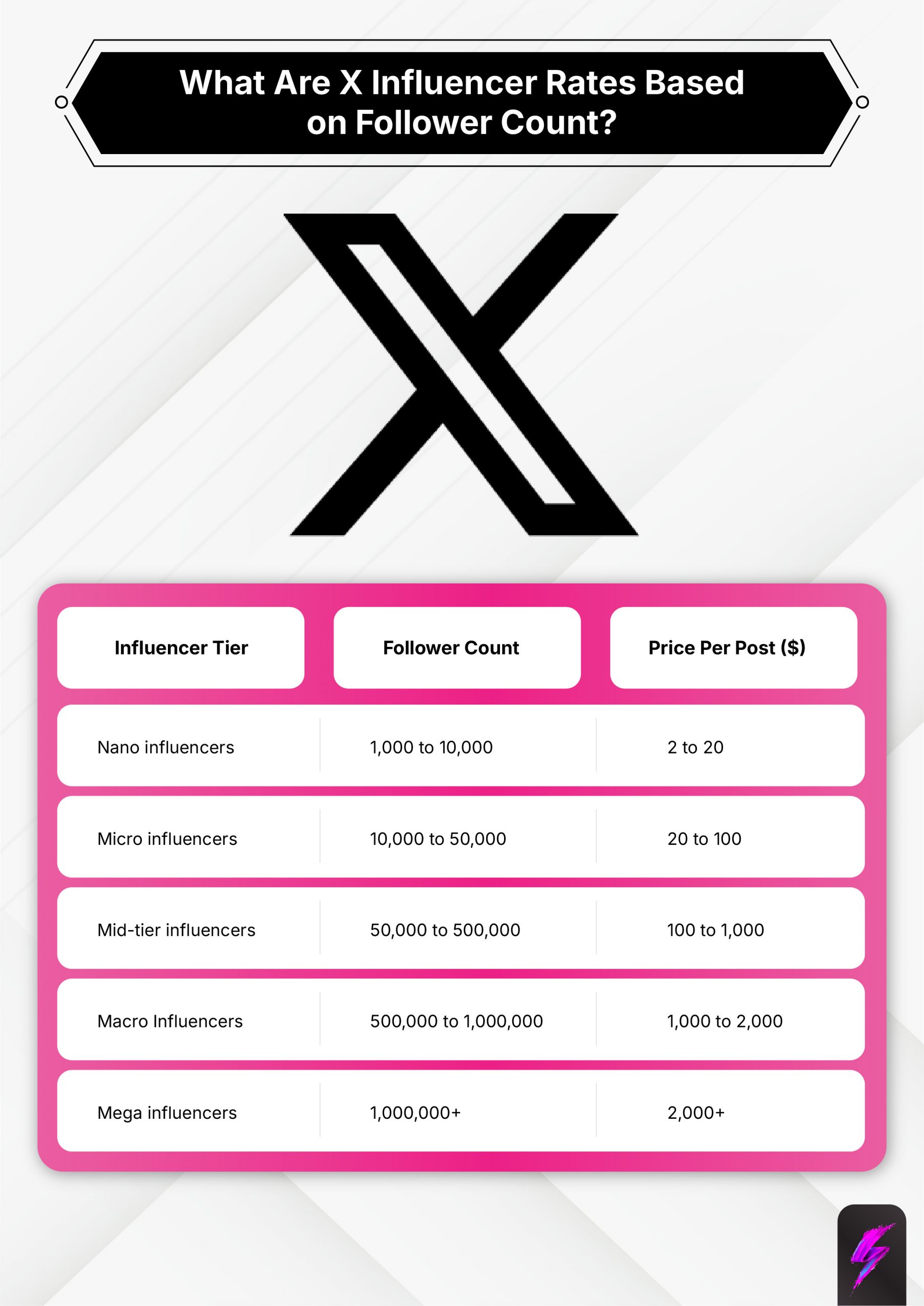
The table below summarizes 2025 X influencer pricing based on follower tiers and content type.
| Influencer Tier | Follower Count | Tweet/Post ($) |
| Nano influencers | 1,000 to 10,000 | 2 to 20 |
| Micro influencers | 10,000 to 50,000 | 20 to 100 |
| Mid-tier influencers | 50,000 to 500,000 | 100 to 1,000 |
| Macro influencers | 500,000 to 1,000,000 | 1,000 to 2,000 |
| Mega influencers | 1,000,000+ | 2,000+ |
Sources: Influencer Marketing Hub, Impact
What Should You Know Before Budgeting for Influencer Campaigns?
Before budgeting for influencer marketing campaigns, brands should define campaign goals, understand their target audience, select appropriate influencer tiers, and plan for costs, including content creation, gifting, platform fees, and KPIs to measure ROI and conversion rate.
1. Set Clear Goals
Setting clear goals involves defining the objectives of a campaign, such as increasing brand awareness, driving sales, or boosting engagement, so brands can plan actions that maximize impact and deliver measurable results.
2. Choose the Right Platform
Choosing the right platform means selecting social media platforms where your target audience is most active.
Brands working with Socially Powerful get insights from cross-platform data, helping them identify the social media platforms where influencer content performs best. Through this, the campaigns reach the intended demographics effectively, maximizing impressions, engagement, and conversions.
3. Know Your Influencer Tier
Knowing your influencer tier includes becoming familiar with the follower count, engagement rate, and niche relevance of influencers such as nano, mid-tier, macro, or celebrity to match campaign goals and budget.
Socially Powerful is one such influencer marketing agency that connects brands with influencers across tiers, aligning each campaign with budget, goals, and audience preferences to create the most impactful collaborations.
4. Consider Content Type
Considering content type requires deciding between static posts, stories, reels, videos, or live streams, factoring in production effort, engagement potential, and costs.
Content type also influences how audiences perceive the brand message, with more interactive formats, such as reels or live streams, driving higher attention and deeper connections compared to static posts.
5. Brand Awareness
Brand awareness campaigns focus on reaching large audiences to increase recognition, impressions, and social presence, helping products or services become more familiar and trusted.
6. Account for Extra Costs
Accounting for extra costs includes product gifting, content creation expenses, travel, platform fees, or any other charges influencers may incur while running campaigns.
7. Calculating ROI
Calculating ROI measures campaign effectiveness through engagement, conversions, and sales, comparing marketing spend against outcomes so the budget aligns with performance indicators (KPIs).
8. Plan for Long-Term Value
Planning for long-term value involves designing campaigns that build and promote ongoing relationships with influencers, build trust, and generate engagement or conversions over time. Brands benefit when these partnerships evolve beyond one-off posts, enabling consistent messaging, deeper audience connections, and better insights into what content drives results.
Long-term collaborations also reduce onboarding time, improve campaign efficiency, and allow influencers to authentically integrate the brand into their content, increasing credibility and sustained ROI.
9. Track Your Metrics
Tracking metrics involves monitoring KPIs such as engagement rate, conversion rate, reach, and impressions to evaluate campaign success and adjust strategies when needed. For example, a fitness brand partnering with a micro-influencer might notice that Instagram Stories featuring workout tips generate higher swipe-ups and link clicks than static posts.
By tracking these metrics in real time, the brand can prioritize similar content, optimize posting times, and allocate budget to the most effective formats, maximizing both engagement and conversions.
How to Budget Your Influencer Marketing Costs?
To budget for influencer marketing costs, brands should account for influencer tiers, campaign objectives, content requirements, and product-related expenses.
- Identify Influencer Tier Costs
- Define Campaign Goals
- Include Product and Content Costs
- Allocate for Platform Fees
- Use Performance Tracking Tools
Do Influencers Get Paid for Ads?
Yes, influencers get paid for ads through sponsorships and paid partnerships, which involve direct payments for featuring a brand’s product or service. Affiliate marketing rewards influencers based on sales generated through their links, while brand deals may include long-term collaborations across multiple campaigns.
Which Platform Has the Highest Influencer Rates?
YouTube has the highest influencer rates for marketing campaigns, with mid-tier creators demanding up to $10,000 per video due to the high production value and video-based content. Influencer rates vary across other platforms based on content type, engagement, and audience reach.
We'll show you how to start powerful conversation, drive social engagement, build your brand, hit sales targets or meet other goals you have, wherever you are in the world.
Work with us







